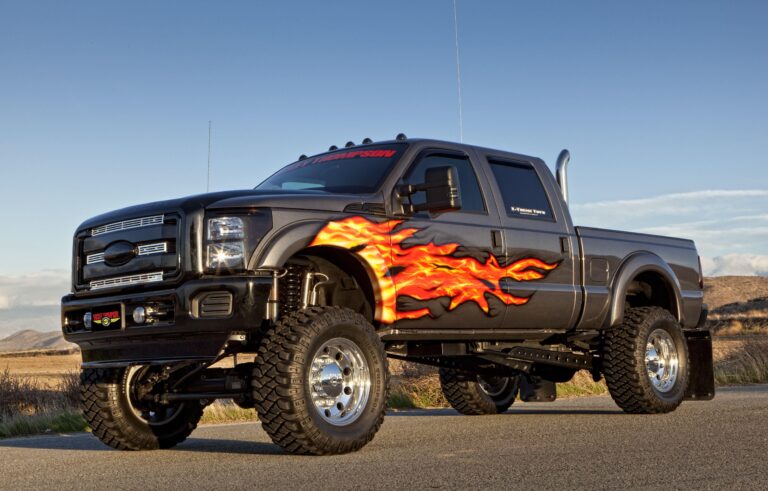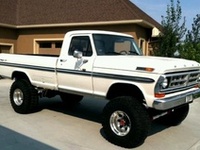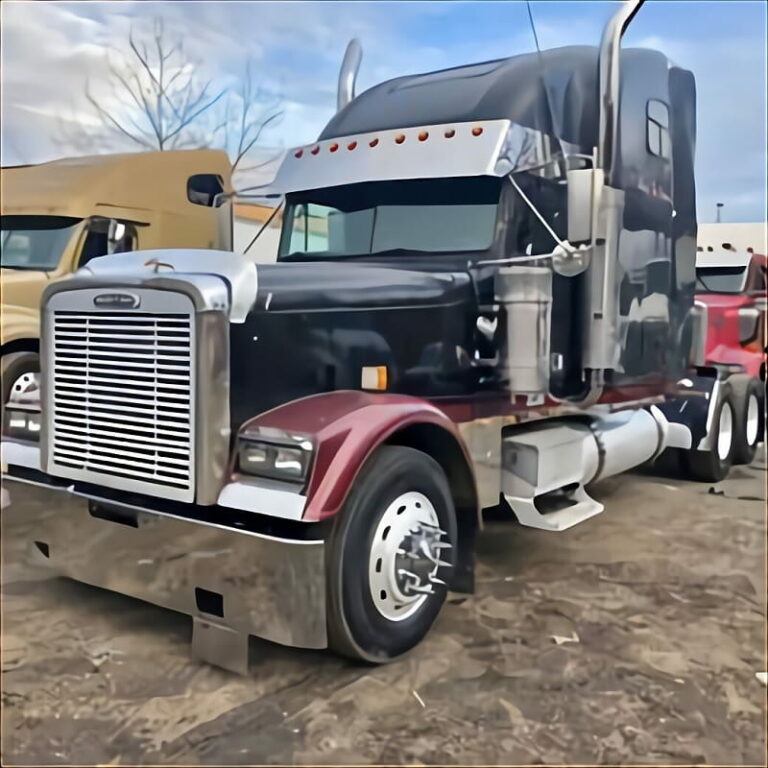Truck Part Names: A Comprehensive Guide to Understanding Your Vehicle
Truck Part Names: A Comprehensive Guide to Understanding Your Vehicle cars.truckstrend.com
The hum of a powerful engine, the sheer force of a heavy load, the endless miles stretching across the highway – trucks are engineering marvels, complex machines built for endurance and utility. Whether you’re a seasoned truck driver, a budding mechanic, a fleet manager, or simply a curious enthusiast, understanding the myriad of components that make up these magnificent vehicles is not just a matter of curiosity; it’s a fundamental necessity. Knowing "Truck Part Names" is the bedrock of effective maintenance, accurate troubleshooting, safe operation, and efficient communication within the trucking industry. It empowers you to speak the language of mechanics, make informed purchasing decisions, and ultimately, keep these vital workhorses running smoothly.
This comprehensive guide will delve deep into the anatomy of a truck, dissecting its various systems and naming the crucial parts within them. From the heart of the engine to the wheels on the road, we’ll explore the nomenclature that defines each component, offering practical insights and actionable advice to enhance your knowledge and confidence.
Truck Part Names: A Comprehensive Guide to Understanding Your Vehicle
The Backbone: Engine and Powertrain Components
At the core of every truck lies its engine, the powerhouse that converts fuel into motion. Understanding its components and those of the powertrain is paramount for performance and reliability.
- Engine Block: The main casting that houses the cylinders, pistons, and crankshaft. It’s the structural foundation of the engine.
- Cylinder Head: Sits atop the engine block, containing the valves (intake and exhaust), camshaft (in overhead cam designs), and spark plugs (for gasoline engines) or fuel injectors (for diesel engines).
- Pistons: Cylindrical components that move up and down within the cylinders, compressing the air-fuel mixture and transmitting power to the crankshaft.
- Crankshaft: A large shaft connected to the pistons via connecting rods. It converts the linear motion of the pistons into rotational motion.
- Camshaft: Controls the opening and closing of the engine’s valves. In modern engines, there might be multiple camshafts.
- Turbocharger/Supercharger: Forced induction devices that increase engine power by forcing more air into the engine’s cylinders. Turbochargers are exhaust-gas driven, while superchargers are belt-driven.
- Fuel Injectors: Precisely spray fuel into the engine’s combustion chambers.
- Fuel Pump: Draws fuel from the tank and delivers it to the engine.
- Radiator: A heat exchanger that dissipates heat from the engine’s coolant, preventing overheating.
- Alternator: Generates electrical power to run the truck’s electrical systems and recharge the battery.
- Starter Motor: An electric motor that cranks the engine to start it.
- Transmission: Manages the power transfer from the engine to the driveshaft, allowing for different gear ratios (manual or automatic).
- Clutch: In manual transmissions, it disengages the engine from the transmission to allow for gear changes.
- Driveshaft: A rotating shaft that transmits power from the transmission to the differential.
- Differential: A set of gears that allows the wheels on the same axle to rotate at different speeds, especially crucial when turning.
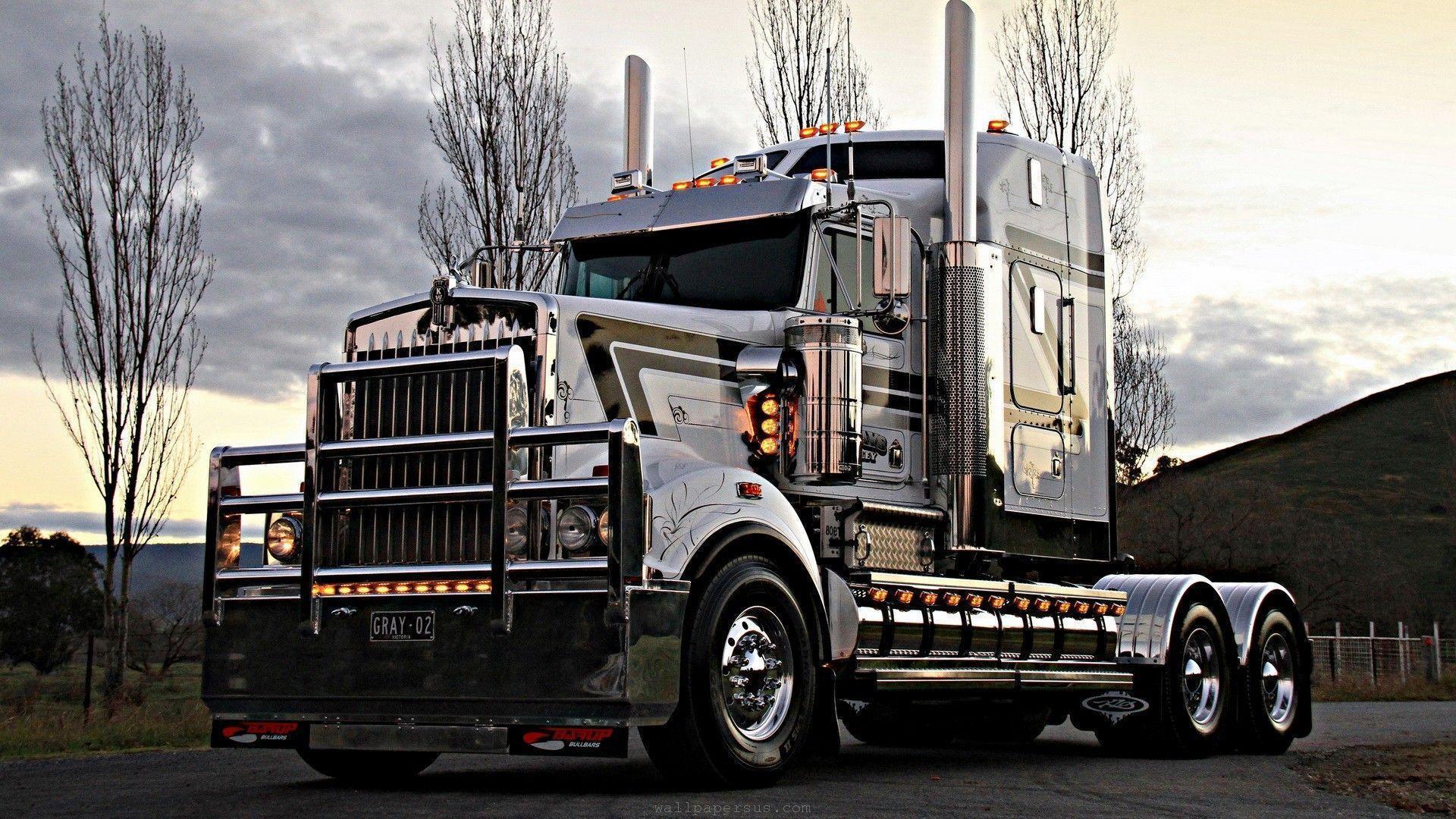
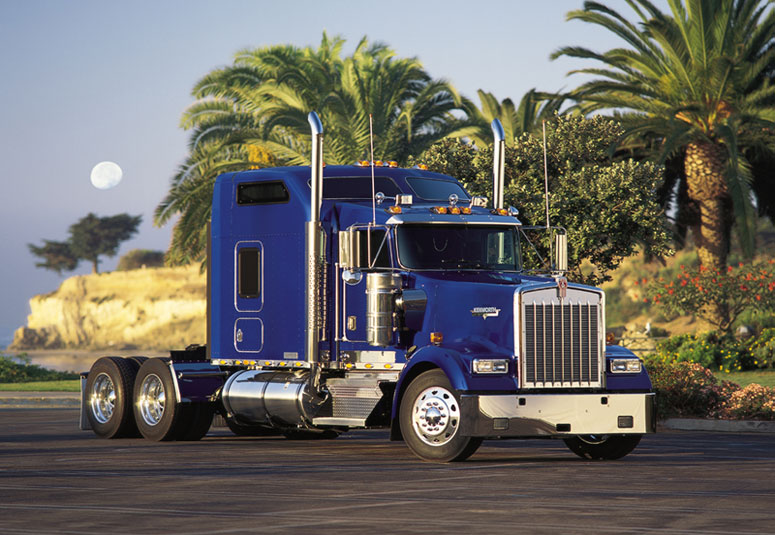
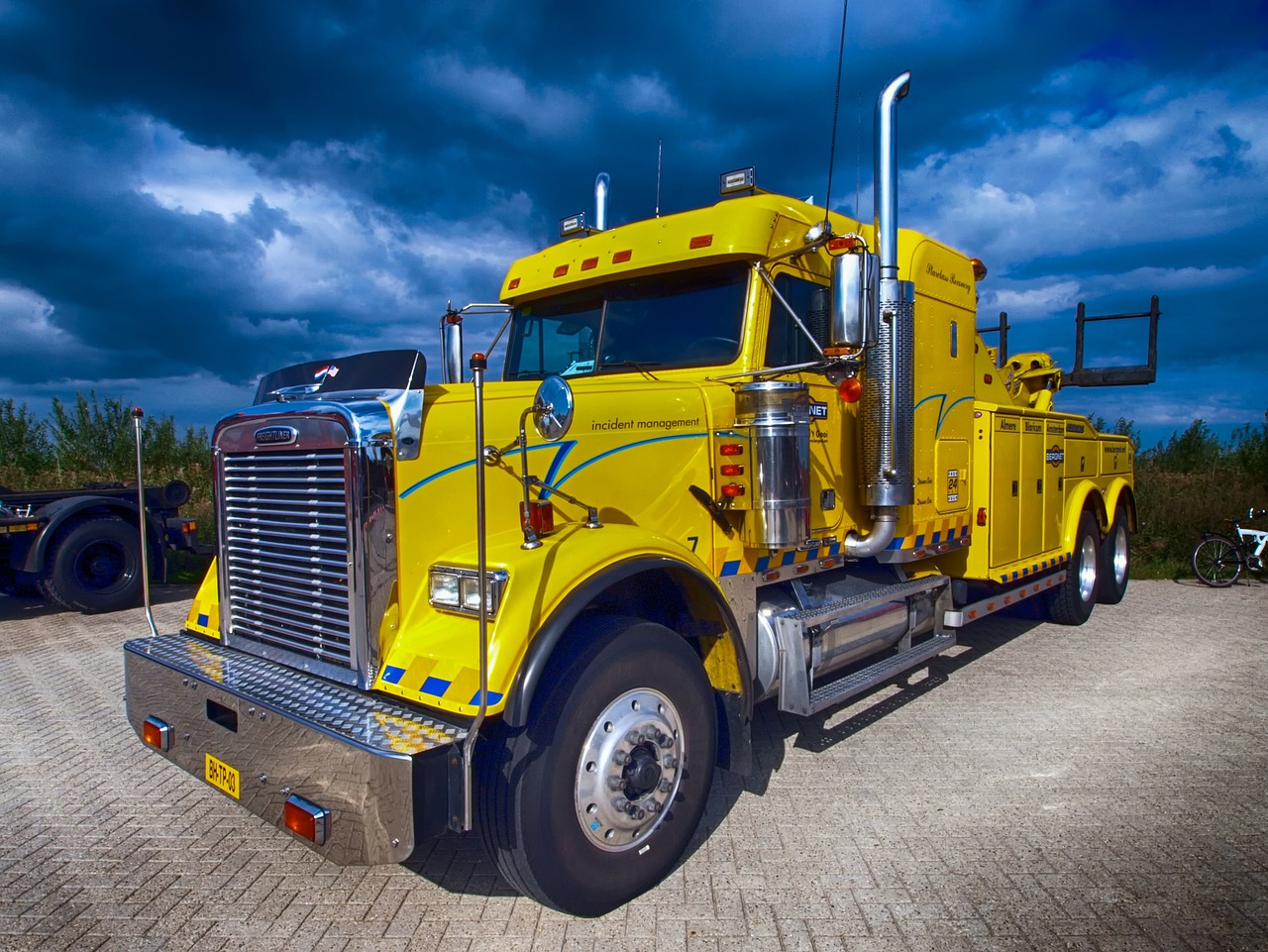
Keeping it Rolling: Chassis and Suspension Systems
The chassis provides the structural integrity, while the suspension ensures a smooth ride and proper handling, even under heavy loads.
- Frame: The main structural backbone of the truck, to which all other components are attached. Typically a ladder frame in heavy-duty trucks.
- Axles: Shafts that connect the wheels and support the weight of the truck and its cargo. Trucks often have multiple axles (steering axle, drive axles, tag axles).
- Wheels: The assemblies that tires are mounted on, connecting the truck to the road.
- Tires: Rubber components that provide traction, support the load, and absorb road irregularities.
- Leaf Springs: Layers of steel plates that flex to absorb shocks and support weight. Common in heavy-duty trucks.
- Air Bags (Air Springs): Rubber bellows filled with compressed air, providing a smoother ride and adjustable suspension height.
- Shock Absorbers/Dampers: Control spring oscillations, preventing excessive bouncing.
- Kingpins: Pivots that allow the front wheels to steer, particularly in heavy-duty trucks.
- Ball Joints: Flexible spherical bearings that allow for steering and suspension movement.
- Tie Rods: Connect the steering gear to the steering knuckles, transmitting steering input to the wheels.
- Steering Box/Gear: Converts the rotational motion of the steering wheel into the linear motion needed to turn the wheels.
- Power Steering Pump: Provides hydraulic pressure to assist in steering, making it easier to turn heavy wheels.
Stopping Power: Brake System Essentials
No component is more critical for safety than the braking system. Understanding its parts is essential for proper maintenance and accident prevention.
- Brake Pads (Disc Brakes): Friction material that presses against the rotor to slow the wheel.
- Brake Shoes (Drum Brakes): Friction material that presses against the inside of the brake drum.
- Brake Drums: Cylindrical components that rotate with the wheel; brake shoes press against their inner surface.
- Brake Rotors (Discs): Flat, circular components that rotate with the wheel; brake pads clamp onto them.
- Calipers: Housings that contain the brake pads and pistons, which press the pads against the rotor.
- Brake Lines/Hoses: Tubes that carry hydraulic fluid or compressed air to the brake components.
- Master Cylinder (Hydraulic Brakes): Converts pedal pressure into hydraulic pressure to actuate the brakes.
- Air Compressor (Air Brakes): Generates compressed air for air brake systems.
- Air Tanks/Reservoirs: Store compressed air for the braking system.
- Brake Chambers: Actuators that convert air pressure into mechanical force to apply the brakes.
- ABS (Anti-lock Braking System) Components: Includes wheel speed sensors and a control module to prevent wheel lock-up during braking.
Comfort and Control: Cab and Interior Parts
The cab is the driver’s office, and its components are designed for ergonomics, safety, and functionality.
- Dashboard: The panel in front of the driver containing gauges, controls, and indicators.
- Steering Wheel: The primary control for directing the truck.
- Seats: Designed for long-haul comfort and support, often with air suspension.
- Gauges: Display vital information like speed, RPM, oil pressure, coolant temperature, fuel level, and air pressure.
- HVAC System (Heating, Ventilation, Air Conditioning): Maintains comfortable cabin temperature.
- Mirrors: Side mirrors (often multiple for wide views) and rearview mirror for visibility.
- Windshield: The front window, providing visibility and protection.
- Wipers: Clear the windshield of rain and debris.
- Door Panels: Interior coverings of the doors, often housing window controls and storage.
Lights, Wires, and Bytes: Electrical and Lighting Systems
Modern trucks are highly dependent on complex electrical systems for operation, safety, and communication.
- Battery: Stores electrical energy to start the engine and power accessories when the engine is off.
- Alternator: (Reiterated) Recharges the battery and powers the electrical system when the engine is running.
- Starter: (Reiterated) Engages the flywheel to crank the engine.
- Wiring Harness: Bundles of wires that transmit electrical signals and power throughout the truck.
- Fuses/Relays: Protective devices that prevent electrical overloads and control circuits.
- Headlights: Front lights for illumination.
- Taillights: Rear lights for visibility and braking indication.
- Marker Lights: Small lights along the sides of the truck and trailer to indicate its dimensions.
- Turn Signals: Indicate intended turns or lane changes.
- ECM/ECU (Engine Control Module/Unit): The "brain" of the engine, controlling fuel injection, ignition timing, and other critical functions.
- Sensors: Numerous sensors (e.g., O2 sensor, ABS wheel speed sensor, temperature sensors, pressure sensors) provide data to the ECM for optimal performance and diagnostics.
Beyond the Basics: Specialized Truck Components
Depending on the truck’s application, it may include specialized components.
- Fifth Wheel: A coupling device mounted on the tractor that connects to a semi-trailer, allowing it to pivot.
- Trailer Couplings/Hitches: Devices for connecting trailers (e.g., pintle hooks, ball hitches).
- PTO (Power Take-Off): A mechanical gearbox that draws power from the truck’s engine to operate auxiliary equipment like hydraulic pumps for dump beds or cranes.
- Hydraulic Systems: Used for dump trucks, cranes, and other equipment requiring powerful linear motion. Includes pumps, cylinders, and valves.
- Reefer Units (Refrigeration Units): Self-contained cooling systems mounted on trailers for transporting temperature-sensitive cargo.
- Liftgates: Hydraulic platforms mounted at the rear of a truck or trailer to assist in loading and unloading cargo.
Practical Advice and Actionable Insights
Learning truck part names isn’t just an academic exercise; it’s a practical skill with significant benefits:
- Improved Communication: When your mechanic asks about a "differential fluid leak," you’ll understand exactly what they mean, leading to faster, more accurate diagnoses and repairs.
- Accurate Parts Ordering: Avoid costly mistakes by knowing the precise part you need, whether it’s an OEM (Original Equipment Manufacturer) or aftermarket component.
- Enhanced DIY Maintenance: For those who enjoy working on their own trucks, identifying parts is the first step to performing routine maintenance and minor repairs confidently.
- Better Troubleshooting: When an issue arises, knowing the names and functions of parts helps you narrow down potential causes.
- Increased Safety Awareness: Understanding how critical components like brake lines or steering linkages work reinforces the importance of their proper function and maintenance.
Tips for Learning:
- Utilize Diagrams and Manuals: Truck service manuals and online parts diagrams are invaluable resources.
- Watch Instructional Videos: YouTube is a treasure trove of content showcasing specific parts and their functions.
- Visit Repair Shops (with permission): Observing mechanics at work can provide real-world context.
- Start Broad, Then Specialize: Begin by understanding major systems, then delve into the finer details of parts relevant to your specific truck or job.
- Focus on Your Truck Type: Heavy-duty, medium-duty, and light-duty trucks share many principles but have distinct components and nomenclature.
Challenges and Solutions:
- Vast Number of Parts: The sheer volume can be overwhelming. Solution: Break it down into manageable sections (as done in this article).
- Variations Between Manufacturers/Models: A "wheel hub" on one truck might look different on another. Solution: Always consult your truck’s specific manual or parts catalog for precise identification.
- Evolving Technology: New sensors, electronic control units, and hybrid systems are constantly introduced. Solution: Embrace continuous learning; the trucking world is always advancing.
Truck Part Names: Illustrative Price Ranges
Providing exact prices for truck parts is challenging due to immense variability based on:
- Truck Make and Model: Parts for a Peterbilt 379 will differ from a Ford F-150.
- OEM vs. Aftermarket: Original Equipment Manufacturer (OEM) parts are typically more expensive but guaranteed to fit and perform as designed. Aftermarket parts can be cheaper but vary in quality.
- New vs. Used/Rebuilt: Used or rebuilt parts offer cost savings but come with varying warranties and lifespans.
- Supplier/Retailer: Prices vary between dealerships, independent parts stores, and online vendors.
- Labor Costs: Installation costs are separate from part costs.
The table below provides a highly generalized and illustrative range for common truck part categories. These are not exact prices and should be used only as a very rough guide.
| Part Category | Example Parts (Common) | Estimated Price Range (Part Only) | Notes |
|---|---|---|---|
| Engine Components | Fuel Injector, Alternator | $150 – $1,500+ | Varies greatly by engine size/type; major overhauls cost thousands. |
| Powertrain | Clutch Kit, Driveshaft U-Joint | $200 – $2,000+ | Transmission rebuilds/replacements are very costly ($3,000 – $10,000+). |
| Brake System | Brake Pads/Shoes, Rotor/Drum | $50 – $500 per axle | Air brake components (chambers, valves) can be $100-$500 each. |
| Suspension | Leaf Spring, Shock Absorber | $100 – $800+ per component | Air springs can be $200-$600 each. |
| Steering | Tie Rod End, Power Steering Pump | $70 – $600 | Steering gearboxes can be $500 – $2,000+. |
| Electrical/Lighting | Battery, Headlight Assembly | $100 – $800+ | ECMs are expensive ($1,000 – $5,000+). |
| Tires | Commercial Truck Tire (single) | $250 – $700+ | Prices vary by size, ply, and type (steer, drive, trailer). |
| Cab/Interior | Wiper Motor, Seat | $50 – $2,000+ | Full seat replacements can be very expensive. |
| Specialized/Heavy | Fifth Wheel, PTO Unit | $1,000 – $5,000+ | Highly variable, often application-specific. |
Frequently Asked Questions (FAQ)
Q1: Why is it important to know truck part names?
A1: Knowing part names is crucial for effective communication with mechanics, accurate parts purchasing, efficient troubleshooting, safe operation, and better understanding of your truck’s maintenance needs.
Q2: Are truck part names universal across all truck types?
A2: Many core part names (e.g., engine, transmission, brakes) are universal in concept, but specific designs and terminology can vary significantly between light-duty (pickup trucks), medium-duty, and heavy-duty (semi-trucks) vehicles, as well as between different manufacturers.
Q3: Where can I find diagrams of truck parts?
A3: Your truck’s owner’s manual or service manual is the best resource. Online parts retailers often have detailed diagrams, and specialized automotive repair software (like Alldata or Mitchell) provides extensive visual guides.
Q4: What’s the difference between OEM and aftermarket parts?
A4: OEM (Original Equipment Manufacturer) parts are made by the truck’s original manufacturer or a company contracted by them. Aftermarket parts are produced by other companies as replacements. OEM parts typically guarantee exact fit and quality but are often more expensive. Aftermarket parts can be more affordable but vary in quality and fit.
Q5: How do I know which specific part my truck needs?
A5: The most reliable way is to consult your truck’s VIN (Vehicle Identification Number) and specific model details. Most parts suppliers and dealerships can use this information to pinpoint the exact component required for your vehicle.
Q6: Do light-duty and heavy-duty trucks share the same part names?
A6: While they share fundamental concepts (e.g., both have an engine, wheels, and brakes), the scale, design, and specific nomenclature of parts often differ. For example, a heavy-duty truck will have an "air brake chamber" while a light-duty truck has a "hydraulic brake caliper."
Conclusion
Understanding truck part names is more than just memorizing labels; it’s about gaining a deeper comprehension of the intricate systems that allow these powerful machines to perform their vital work. From the smallest sensor to the largest engine block, each component plays a critical role in the truck’s overall function, safety, and longevity. By investing time in learning this essential vocabulary, you empower yourself to navigate the complexities of truck ownership, maintenance, and repair with confidence and precision. This knowledge not only enhances your operational efficiency but also contributes significantly to the safety and reliability of your valuable asset on the open road. Continue to learn, explore, and appreciate the engineering marvel that is the modern truck.



